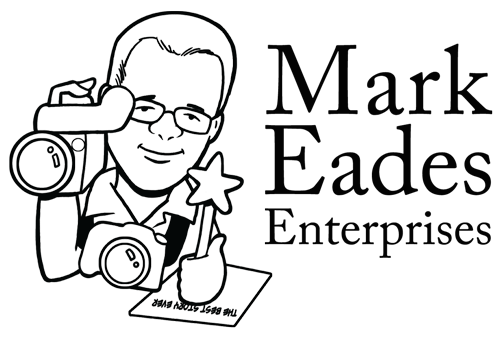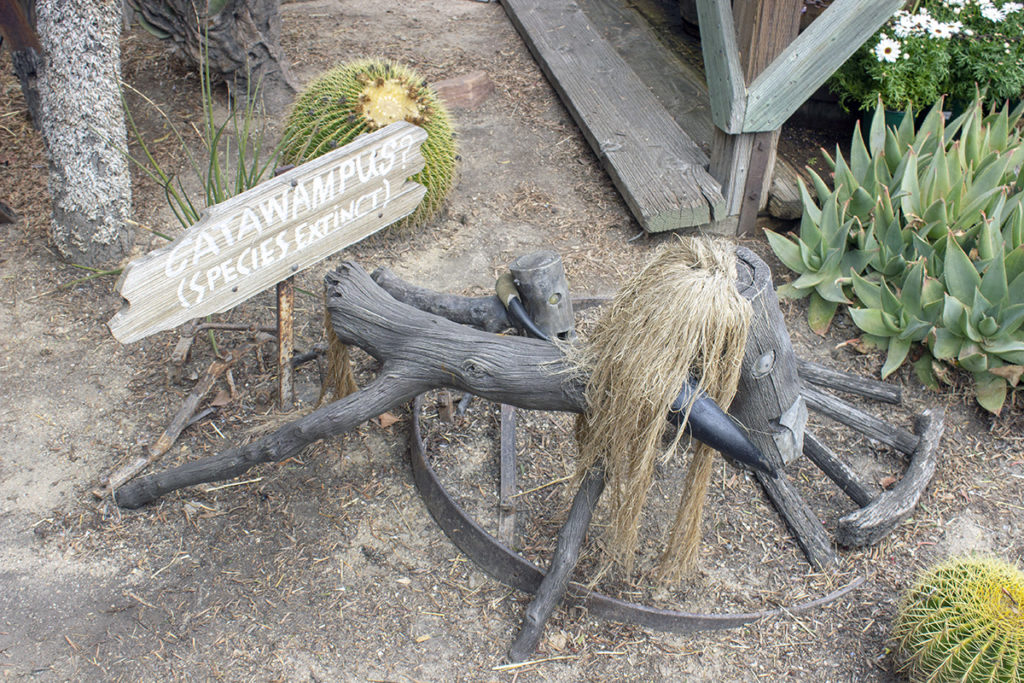At Knott’s Berry Farm in Ghost Town, near the stables and beneath the windmill stands an odd creature known as the Catawampus, or “Species Extinct.” This is Part 1 of a multi-part story.
Now in the past it was thought that the adult Catawampus seen there was a male and was the last one – but now experts are beginning to wonder maybe it’s not that extinct, as now there is a young Catawampus right next to the adult at Knotts. Leading them to believe that maybe the Catawampus at the Farm was not male, but female. There’s no real way to tell even up close.
Or is it that the males take care of the young like some species?
And a second question: Since there is a young one does that mean there are more out there somewhere and they are starting to regrow their numbers like the buffalo?
I set out to find out more, and in my intense search for more information I found the lost journals of Professor Ananias who was, until his disappearance years ago into an abandoned mine in the town of Calico, the expert on the creature that looks like it is made of bare tree branches, known as a Catawampus, or “Species Extinct.”
Here is the first entry from Professor Ananias’ journal: “May 1, 1881 – I arrived at Calico, a new town that sprang up almost overnight due to a discovery of a massive vein of silver. But my interest was not in silver, gold or other such intrinsic things. Rather, I was more interested in the older prospectors’ stories of strange wooden creatures seen in the desert areas. I hope to find one or two of them willing to talk to me. I suspect I will be purchasing them a beverage at the local saloon to loosen their tongues. Secondhand reports indicate that upon sightings of the creatures they were apparently startled into silence. It makes me wonder what it was they saw that could have frightened them so.”
Apparently, the Professor did not find anyone who would talk for some time as his next few entries were simple ones: “June 30, 1881 – Still searching for anyone who will talk to me about this strange creature, though I did find out they were calling it a ‘Catawampus.’ I’m not sure if that is its real name, or just one they have called it. It appears to be a name based on something gone askew. Or maybe they spotted it after walking across an area in a strange manner, or maybe the creature travels in a strange manner.”
Then a few months later, the Professor stumbled across someone who would talk: “September 14, 1881 – I decided to roam around the hills in search of an old prospector named Dusty Mule, after Goldie told me she had heard him talk of the creature during one of his visits to her establishment. No one seemed to know where he was located. But I persevered.
I happened to see a lone strand of mule tracks going into the hills one evening and started to follow them, but it was getting dark and there was no moon. So, I stopped and made camp near a small clump of cacti. As the darkness took hold, I heard the sounds of the night in this forsaken wilderness – that of the coyote mixed in with the sounds of cows mooing in the dark. I thought that the cows were giving away their position in the dark to the coyote. Then I heard one moo a little louder followed by the yelp of a coyote that sounded like it was caught in a trap – then a ghostly silence. No coyote or cows heard the rest of the night. I fell into an uneasy slumber.
Sometime later that night I thought I heard what sounded like the clatter of wooden sticks being clapped together outside my tent where I had bedded down for the night. My horse did not seem to mind it at all. I was tired from not getting any sleep and ignored it. Pretty soon the wooden clapping sound moved away and I went back to sleep.”
A strange sound indeed per the Professor’s journal. What could make a sound like a cow, when there were no cows for miles around? I read on:
“The next morning, I arose and quietly poked my head outside the tent. My horse was still there, but when I looked down at the ground, I saw what appeared to be small holes in the ground. They appeared to be round, of various diameters ranging from less than one inch to nearly three inches. It seemed to me someone was playing tricks on me as the holes were spaced just like that of four-legged animals. They also paralleled the tracks of the old prospector’s mule into the hills. I resolved to follow them and packed up my tent, saddled my horse and set off.”
Editor’s note: This is part one of a multi-part series. For Part 2 click here. For Part 3, click here.


